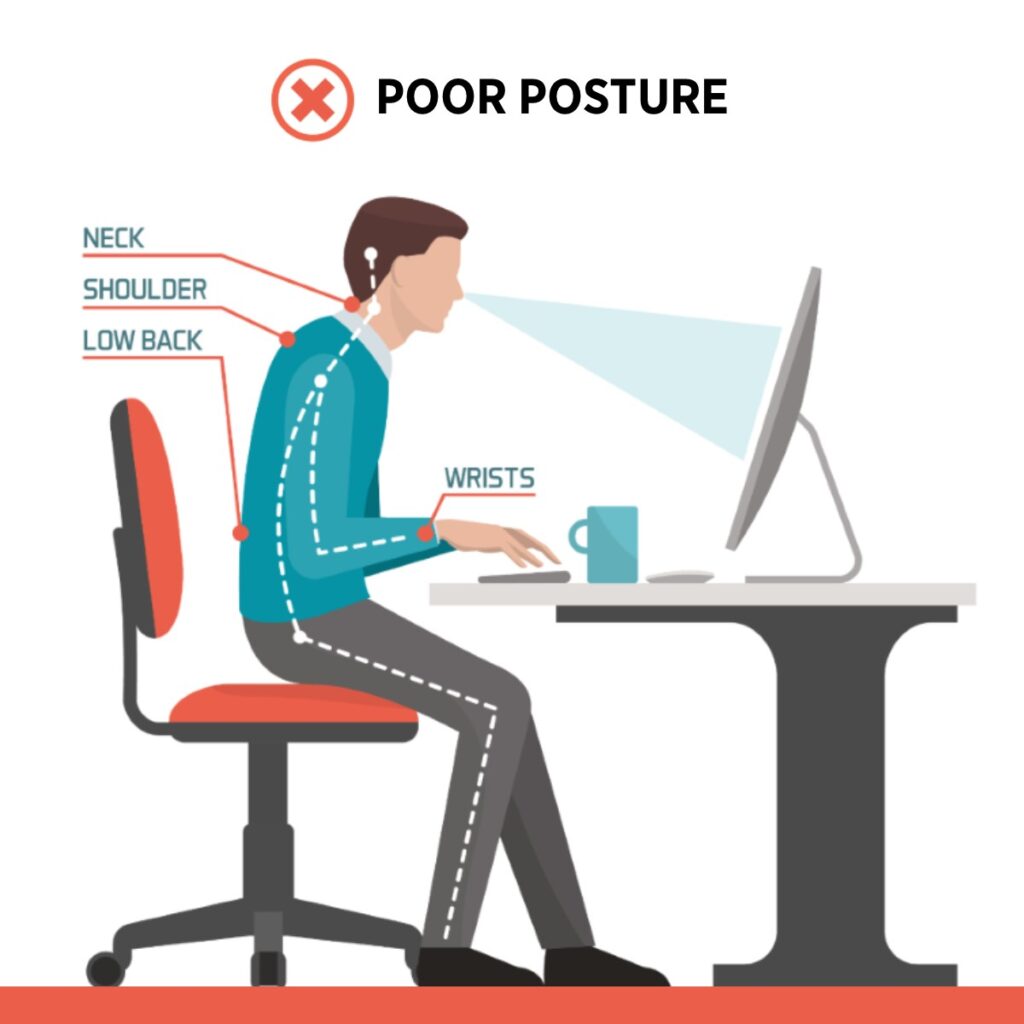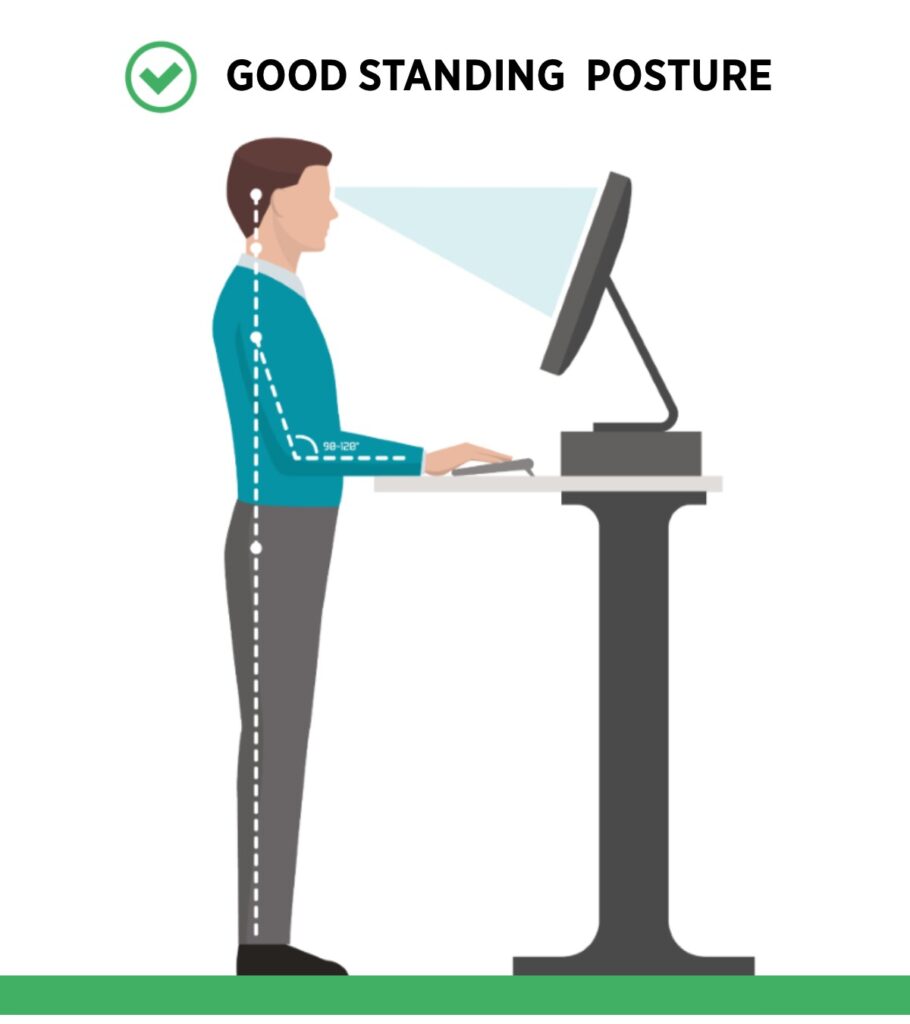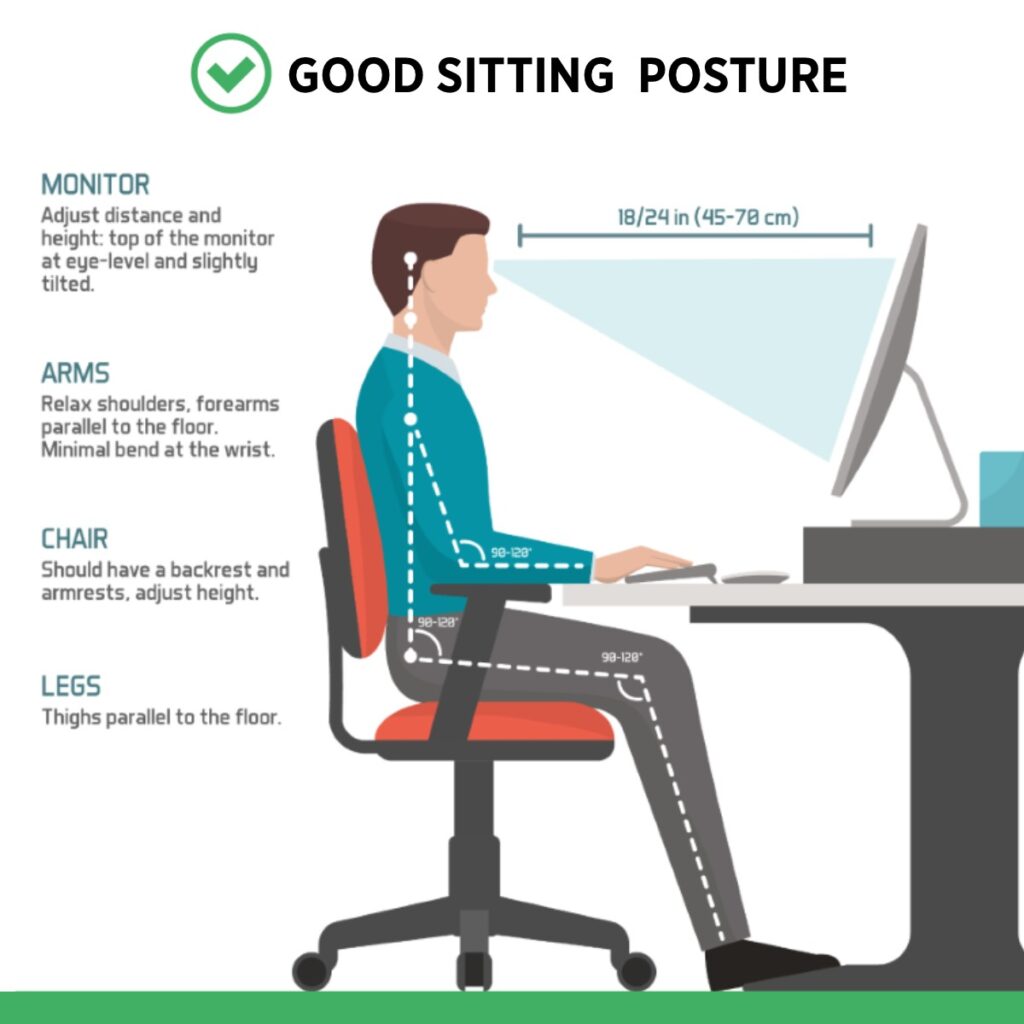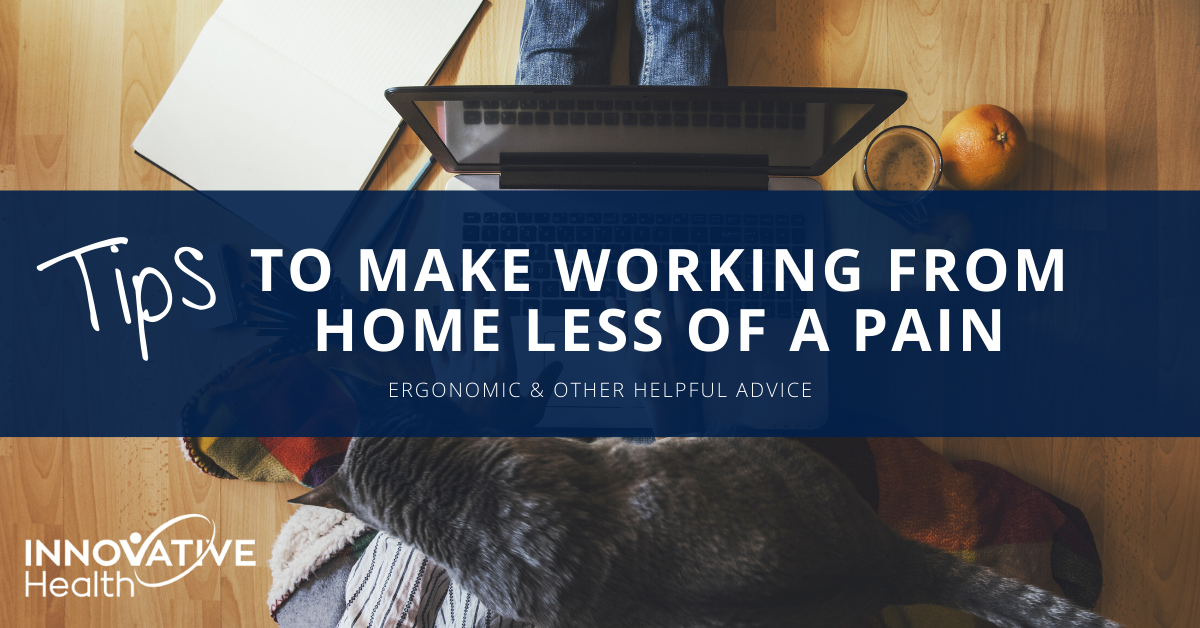Dr. Kevin Ritzenthaler, DC, DCBCN
Proper Ergonomics Reduce Pain
Many people have been asked to set up a home office with little or no notice – without a proper desk and office equipment to do so. But beware, hours spent hunching over a coffee table or sunken into a couch puts your body in an awkward posture which can result in injury.
Here are some tips to help combat the stress and strain of your new work environment so that working from home does not become a literal pain in the neck, back, and shoulders.
Get off the Couch
While working at home, it might seem like the sofa would be the most comfortable place to settle in. But it is not going to provide ideal support or body position for extended periods of work. Save the sofa for binge watching your favorite show and find a different place for doing your work.
Set up an Ergonomic At-Home Workstation

Employing proper ergonomics will help keep you pain free by maintaining the natural curves in your spine. This will protect you from strains, fatigue, and injury. Key components of an ergonomic at home workstation include:
- Sit or stand at a table or desk.
- Forearms should be parallel to the floor whether sitting or standing. If sitting, thighs should also be parallel to the floor.
- Use a chair with a back support, or “perch” on a stool. Add a thin cushion or a folded blanket to adjust your height and soften hard chairs. A small rolled up towel can also act as a lumbar support.
- Computer screens should be at eye level. If working on a laptop, consider elevating the laptop with a stand or books and investing in a separate mouse and keyboard (which start at around $20).


Check out this Before and After video showing these tips in action:
Change Position Often
Movement is the key to keeping pain free. Even after setting up an ergonomically correct workstation, feel free to move around from time to time. Take a walk while talking on the phone. If you have something to read, grab your laptop and move to a comfortable chair for a bit. If you’re primarily sitting, try standing for short periods of time and vice versa.
Take Breaks
In an office environment, you likely take mini-breaks without even realizing it – talking to a co-worker about the latest episode of This is Us or the recent Packer’s trade deal. Now that you’re at home, it’s important that you take breaks to relax your mind and body.
Stretch
Your new at-home work environment may cause some aches and pains. Now is a great time to build stretching into your everyday work routine. Periodic stretching will help deliver fresh blood supply, oxygen, and other healing nutrients to your muscles. You’ll feel better and prevent injury. Find some easy stretches here.
Manage Your Stress
Let’s face it – it’s a stressful time for everyone. And stress can increase the chances of aches, pains, and injuries. Find what works for you to minimize your stress. Here are some ideas: take a break from the 24-hour news cycle and social media, exercise, do some deep breathing, listen to music, get lost in a book, or binge a favorite show. Find whatever works for you to take a break.
And when life returns to normal – guess what? These tips work equally as well when you’re back at your “real” office.
If you are suffering from aches and pains, chiropractic can help. Request an appointment today.


